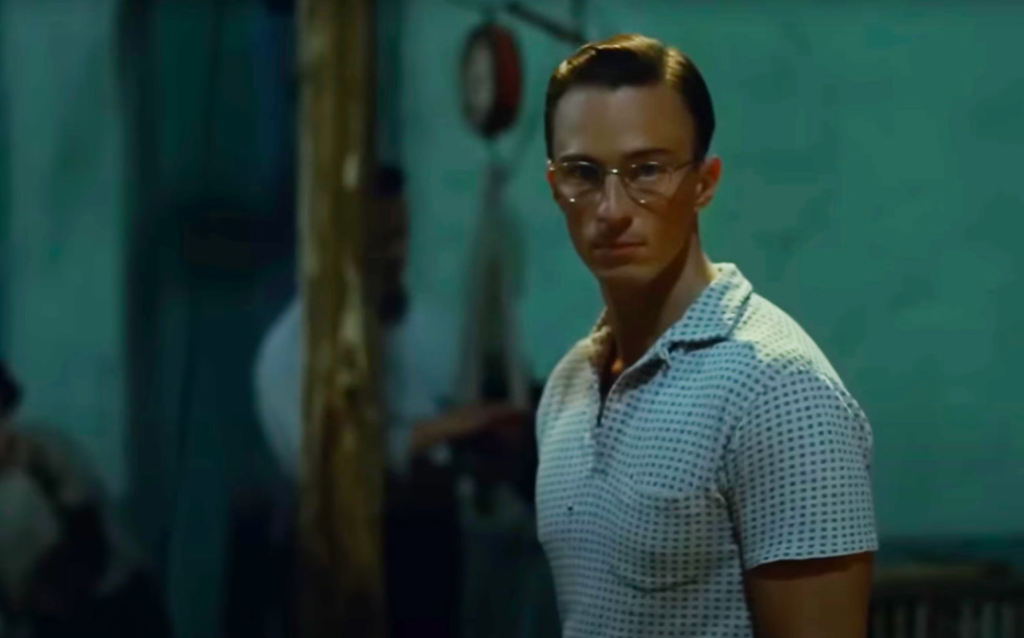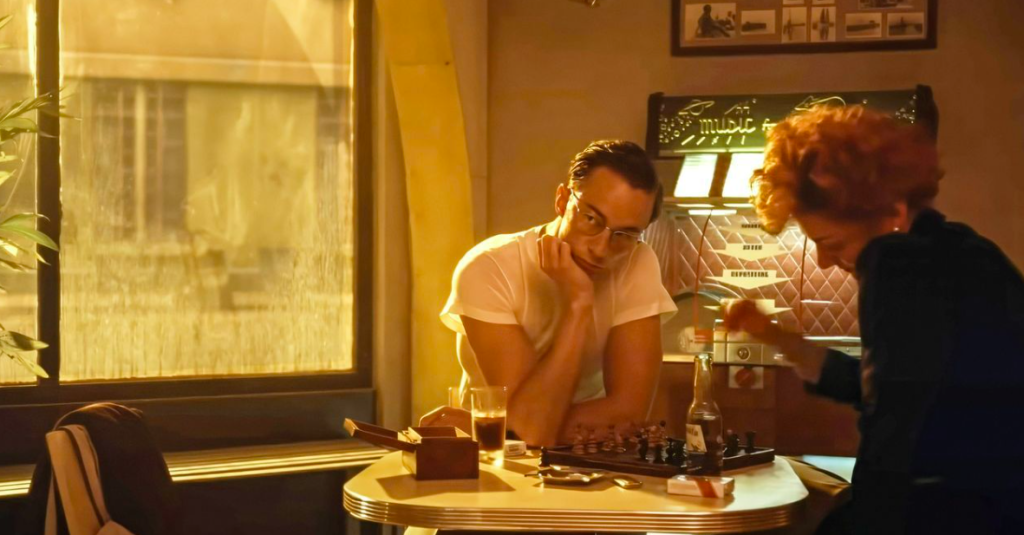
Luca Guadagnino, a renowned director behind Call Me by Your Name and Challengers, now brings us into a new romantic world in Queer, adapted from the deeply personal work of William S. Burroughs. The result? A unique, striking film that stands out in its own right.
Set in 1950s Mexico, the film follows William Lee (played by Daniel Craig), a wandering writer trapped in a life of alcohol and drug abuse. His existence is marked by indulgence, with little to anchor him. When not numbing his mind to cope with life’s chaos, William spends his time with his mischievous gay friend Joe (Jason Schwartzman) or in the bars where fleeting encounters with young men occur—often with a price.
William, a wandering dandy, drifts through life aimlessly, moving from one binge to the next, and from bar to bar. It is during one of these hazy nights that he encounters Eugene (Drew Starkey), a strikingly handsome young man who, with his Navy background, seems almost otherworldly. Eugene’s beauty, marked by a flawless face and perfect body, draws William in, sparking an immediate obsession. As they start spending time together, William’s desire grows, and he wonders if he can seduce Eugene into his bed. But Eugene remains a mystery—ambiguous, detached, sending mixed signals while spending much of his time with Mary (Andra Ursuta), a woman he enjoys playing chess with.
Eventually, one night, Eugene finds himself at William’s place, and they sleep together. In that moment, William feels a rare sense of aliveness, something he hasn’t experienced in ages. However, as the days pass, Eugene becomes distant, behaving as though nothing significant has happened, even avoiding William at times. Desperate, William offers to pay for Eugene’s trip (or even buy his company altogether) in exchange for his companionship and certain “favors.” Initially hesitant, Eugene eventually agrees, and the two head for South America. There, William embarks on a quest to find Yage, a type of ayahuasca rumored to have telepathic powers. He hopes that finding it might allow him to read Eugene’s thoughts and perhaps make him fall in love the way he feels for him.




Luca Guadagnino’s Cinematic Brilliance
Luca Guadagnino’s work has long been celebrated for its ability to reinvent itself, from Amore to A Bigger Splash, Suspiria, Call Me by Your Name, his series We Are Who We Are, and even the cannibal romance Bones and All and Challengers. Each of these projects presents something distinctly unique and fascinating. For many, Call Me by Your Name remains his crowning achievement, but Queer is undoubtedly his finest film since then. While it’s more divisive and unconventional, it’s likely to leave a lasting impression on many viewers.
The film’s form is simply magnificent. The portrayal of Mexico, with its gritty bars where patrons drink and decay or fall into comas after wild nights, the chaotic apartments, and the grimy motels, is as beautiful as it is raw. Guadagnino has an exceptional gift for uncovering beauty in even the most unseemly places, infusing romanticism and nostalgia into a disheveled bed or soiled sheets.


A Deeply Emotional and Visually Stunning Experience
The cinematography in Queer is nothing short of superb, evolving throughout the film to reflect the shifting tones and moods. The film navigates between moments of reality, dream-like sequences, nightmarish imagery, and hallucinatory passages. It mirrors William’s existential spiral, consumed by a passionate obsession with a young man whose striking beauty seems to consume those who grow too attached to it.
The dynamic between William and Eugene forms the heart of the film, driving William’s self-destructive tendencies while offering a fleeting glimpse of hope—a paradise he can’t quite grasp. Their relationship is complex, shifting between being friends, lovers, and almost a father-son dynamic, reflecting an impossible love in a time when homosexuality was heavily stigmatized. William, caught in his addictions, clings to the unattainable object of his desire, desperately trying to keep Eugene near, while Eugene remains an enigma—possibly bisexual but unwilling to openly acknowledge it, simultaneously attracted to and repulsed by William.
The film contrasts Mexico, a haven for outcasts where people can lose themselves in cheap drinks and indulgence, with South America and the jungle journey that unfolds. This journey takes a surprising turn with the introduction of a wild character played by Lesley Manville—a botanist whose eccentricity is truly unforgettable.


A Masterful Fusion of Atmosphere and Emotion
Luca Guadagnino’s mastery in blending atmospheres, settings, and styles is on full display in Queer. The film moves between romantic, dramatic, funny, and sensual tones, with moments of filthy decadence and sumptuous beauty. It invokes the spirits of past and present cinema, particularly in its striking intimate scenes—such as the first embrace between William and Eugene and a breathtaking sequence involving Yage. These moments create some of the most beautiful images of queer love ever captured on screen. The film’s final shot is nothing short of chilling.
Articulated yet abstract enough to offer a deeply personal experience for each viewer, Queer leaves a lingering, intoxicating effect, much like Eugene himself. The film is already one of the most visually stunning and emotionally charged releases of 2025, and it may very well join Call Me by Your Name in the ranks of cinematic masterpieces.





